Home Tags Posts tagged with "proceedings of the national academy of sciences"
proceedings of the national academy of sciences
US scientists have found that a lifetime of too much copper in our diets may be contributing to Alzheimer’s disease.
However, research is divided, with other studies suggesting copper may actually protect the brain.
The latest study in Proceedings of the National Academy of Sciences showed high levels of copper left the brain struggling to get rid of a protein thought to cause the dementia.
Copper is a vital part of our diet and necessary for a healthy body.
Tap water coming through copper pipes, red meat and shellfish as well as fruit and vegetables are all sources of dietary copper.
The study on mice, by a team at the University of Rochester in New York, suggested that copper interfered with the brain’s shielding – the blood brain barrier.
Mice that were fed more copper in their water had a greater build-up of the metal in the blood vessels in the brain.

A lifetime of too much copper in our diets may be contributing to Alzheimer’s disease
The team said this interfered with the way the barrier functioned and made it harder for the brain to get rid of a protein called beta amyloid.
One of the hallmarks of Alzheimer’s disease is the formation of plaques of amyloid in the dying brain.
Lead researcher Dr. Rashid Deane said: “It is clear that, over time, copper’s cumulative effect is to impair the systems by which amyloid beta is removed from the brain.”
He said that copper also led to more protein being produced: “It’s a double whammy of increased production and decreased clearance of amyloid protein.
“Copper is a very essential metal ion and you don’t want a deficiency and many nutritious foods also contain copper.”
However, he said taking supplements may be “going overboard a bit”.
Commenting on the latest findings, Chris Exley, professor of bioinorganic chemistry at Keele University in the UK, said there was “no true consensus” on the role of copper in Alzheimer’s disease.
His research on human brains reached the opposite conclusion: “In our most recent work we found evidence of lower total brain copper with ageing and Alzheimer’s. We also found that lower brain copper correlated with higher deposition of beta amyloid in brain tissue.
“He said at the moment we would expect copper to be protective and beneficial in neurodegeneration, not the instigator, but we don’t know.
“The exposure levels used mean that if copper is acting in the way they think it does in this study then it must be doing so in everyone.”
Scientists discovered that a surge of electrical activity in the brain could be responsible for the vivid experiences described by near-death survivors.
A study carried out on dying rats found high levels of brainwaves at the point of the animals’ demise.
US researchers said that in humans this could give rise to a heightened state of consciousness.
The research is published in the Proceedings of the National Academy of Sciences.
The lead author of the study, Dr. Jimo Borjigin, of the University of Michigan, said: “A lot of people thought that the brain after clinical death was inactive or hypoactive, with less activity than the waking state, and we show that is definitely not the case.
“If anything, it is much more active during the dying process than even the waking state.”

A surge of electrical activity in the brain could be responsible for the vivid experiences described by near-death survivors
From bright white lights to out-of-body sensations and feelings of life flashing before their eyes, the experiences reported by people who have come close to death but survived are common the world over.
However, studying this in humans is a challenge, and these visions are little understood.
To find out more, scientists at the University of Michigan monitored nine rats as they were dying.
In the 30-second period after the animal’s hearts stopped beating, they measured a sharp increase in high-frequency brainwaves called gamma oscillations.
These pulses are one of the neuronal features that are thought to underpin consciousness in humans, especially when they help to “link” information from different parts of the brain.
In the rats, these electrical pulses were found at even higher levels just after the cardiac arrest than when animals were awake and well.
Dr. Jimo Borjigin said it was feasible that the same thing would happen in the human brain, and that an elevated level of brain activity and consciousness could give rise to near-death visions.
“This can give us a framework to begin to explain these. The fact they see light perhaps indicates the visual cortex in the brain is highly activated – and we have evidence to suggest this might be the case, because we have seen increased gamma in area of the brain that is right on top of the visual cortex,” she said.
“We have seen increased coupling between the lower-frequency waves and the gamma that has been shown to be a feature of visual awareness and visual sensation.”
However, Dr. Jimo Borjigin said that to confirm the findings a study would have to be carried out on humans who have experienced clinical death and have been revived
Scientists have announced that plants that were frozen during the “Little Ice Age” centuries ago have been observed sprouting new growth.
Samples of 400-year-old plants known as bryophytes have flourished under laboratory conditions.
Researchers say this back-from-the-dead trick has implications for how ecosystems recover from the planet’s cyclic long periods of ice coverage.
The findings appear in Proceedings of the National Academy of Sciences.
They come from a group from the University of Alberta, who were exploring an area around the Teardrop Glacier, high in the Canadian Arctic.
The glaciers in the region have been receding at rates that have sharply accelerated since 2004, at about 3-4 m per year.
That is exposing land that has not seen light of day since the so-called Little Ice Age, a widespread climatic cooling that ran roughly from AD 1550 to AD 1850.
“We ended up walking along the edge of the glacier margin and we saw these huge populations coming out from underneath the glacier that seemed to have a greenish tint,” said Catherine La Farge, lead author of the study.
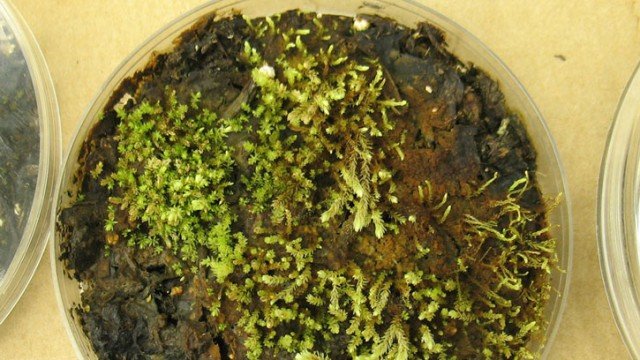
Samples of 400-year-old plants known as bryophytes have flourished under laboratory conditions
Bryophytes are different from the land plants that we know best, in that they do not have vascular tissue that helps pump fluids around different parts of the organism.
They can survive being completely desiccated in long Arctic winters, returning to growth in warmer times, but Dr. Catherine La Farge was surprised by an emergence of bryophytes that had been buried under ice for so long.
“When we looked at them in detail and brought them to the lab, I could see some of the stems actually had new growth of green lateral branches, and that said to me that these guys are regenerating in the field, and that blew my mind,” she said.
“If you think of ice sheets covering the landscape, we’ve always thought that plants have to come in from refugia around the margins of an ice system, never considering land plants as coming out from underneath a glacier.”
But the retreating ice at Sverdrup Pass, where the Teardrop Glacier is located, is uncovering an array of life, including cyanobacteria and green terrestrial algae. Many of the species spotted there are entirely new to science.
“It’s a whole world of what’s coming out from underneath the glaciers that really needs to be studied,” Dr. Catherine La Farge said.
“The glaciers are disappearing pretty fast – they’re going to expose all this terrestrial vegetation, and that’s going to have a big impact.”
Scientists say they have found an answer to why the penguin is unable to fly.
Researchers believe that the bird’s underwater prowess may have cost it its ability to fly.
By looking at seabirds closely related to the penguin, scientists confirmed that a wing that is good for flying cannot also be good for diving and swimming.
The study is published in the Proceedings of the National Academy of Sciences.
Professor John Speakman, from the Scottish University of Aberdeen and the Chinese Academy of Sciences, said: “Like many people, I’ve always been interested in penguins, and seeing them do these phenomenal marches across the ice, I’ve often thought: <<Why don’t they just fly?>>
“And it’s really great to be involved in the group of people that have solved it.”
There are several long-standing theories about why birds cannot fly.
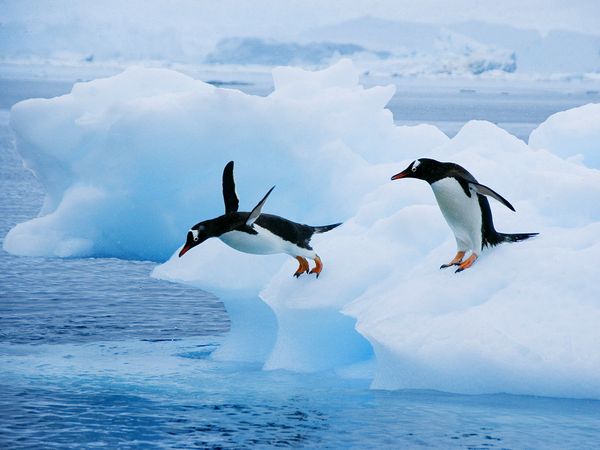
Researchers believe that the penguin’s underwater prowess may have cost it its ability to fly
One idea is that some species became flightless because of a lack of predators on the ground.
“The other idea is a <<biomechanical hypothesis>>,” explained Prof. John Speakman.
“When the bird is flying and diving it has to use its wings to do two different things. The biomechanical hypothesis is that you cannot build a wing that is good at doing both.”
To investigate, the researchers looked at a close relative of the penguin: the guillemot.
This black-and-white seabird not only looks a lot like a penguin, it can swim nearly as well. But unlike the penguin it can fly.
The researchers analyzed the amount of energy that the bird was using.
They found that it could dive with relative ease, but while flying was much more tiring for the guillemot.
Prof. John Speakman said: “The energy costs are very very high. These birds have these very short wings and they have to beat them at an incredible speed to stay in the air. It is exhausting for them.”
The researchers believe that the guillemot is using so much energy, it is only just able to keep itself aloft.
They said that the bird represented a tipping point between seabirds that are able to both fly and swim, and those that are flightless.
In the past, they suggest, the penguin would have faced an evolutionary trade off between staying airborne or having agility beneath the waves.
Prof. John Speakman explained: “Basically the hypothesis is that as the wings became more and more efficient for them to dive, they became less and less efficient for them to fly.
“At some point it became so <<expensive>> for them to fly, that it was better to give up flying all together and make the wings into small flippers.”
A French research team has found that babies can decipher speech as early as three months before birth.
The evidence comes from detailed brain scans of 12 infants born prematurely.
At just 28 weeks’ gestation, the babies appeared to discriminate between different syllables like “ga” and “ba” as well as male and female voices.
Writing in Proceedings of the National Academy of Sciences (PNAS), the French team said it was unlikely the babies’ experience outside the womb would have affected their findings.
The research lends support to the idea that babies develop language skills while still in the womb in response to their parents’ voices.
Experts already know that babies are able to hear noises in the womb – the ear and the auditory part of the brain that allow this are formed by around 23 weeks’ gestation.
But it is still debated whether humans are born with an innate ability to process speech or whether this is something acquired through learning after birth.

A French research team has found that babies can decipher speech as early as three months before birth
The authors of the study in PNAS say environmental factors are undoubtedly important, but based on their findings they believe linguistic processes are innate.
Dr. Fabrice Wallois and colleagues say: “Our results demonstrate that the human brain, at the very onset of the establishment of a cortical circuit for auditory perception, already discriminates subtle differences in speech syllables.”
But they add that this “does not challenge the fact that experience is also crucial for their fine tuning and for learning the specific properties of the native language”.
Their brain scan study was carried out in the first few days following birth, so it is possible that the noises and sounds the newborns encountered in their new environment outside of the womb may have triggered rapid development. However, the researchers doubt this.
British researchers have found that a run of poor sleep can have a dramatic effect on the internal workings of the human body.
The activity of hundreds of genes was altered when people’s sleep was cut to less than six hours a day for a week.
Writing in the journal Proceedings of the National Academy of Sciences, the researchers said the results helped explain how poor sleep damaged health.
Heart disease, diabetes, obesity and poor brain function have all been linked to substandard sleep.
What missing hours in bed actually does to alter health, however, is unknown.
So researchers at the University of Surrey analyzed the blood of 26 people after they had had plenty of sleep, up to 10 hours each night for a week, and compared the results with samples after a week of fewer than six hours a night.
More than 700 genes were altered by the shift. Each contains the instructions for building a protein, so those that became more active produced more proteins – changing the chemistry of the body.
Meanwhile the natural body clock was disturbed – some genes naturally wax and wane in activity through the day, but this effect was dulled by sleep deprivation.
Prof. Colin Smith, from the University of Surrey, said: “There was quite a dramatic change in activity in many different kinds of genes.”
Areas such as the immune system and how the body responds to damage and stress were affected.

British researchers have found that a run of poor sleep can have a dramatic effect on the internal workings of the human body
Prof. Colin Smith added: “Clearly sleep is critical to rebuilding the body and maintaining a functional state, all kinds of damage appear to occur – hinting at what may lead to ill health.
“If we can’t actually replenish and replace new cells, then that’s going to lead to degenerative diseases.”
He said many people may be even more sleep deprived in their daily lives than those in the study – suggesting these changes may be common.
Dr Akhilesh Reddy, a specialist in the body clock at the University of Cambridge, said the study was “interesting”.
He said the key findings were the effects on inflammation and the immune system as it was possible to see a link between those effects and health problems such as diabetes.
The findings also tie into research attempting to do away with sleep, such as by finding a drug that could eliminate the effects of sleep deprivation.
Dr. Akhilesh Reddy said: “We don’t know what the switch is that causes all these changes, but theoretically if you could switch it on or off, you might be able to get away without sleep.
“But my feeling is that sleep is fundamentally important to regenerating all cells.”
A new research found that young people who smoke cannabis run the risk of a significant and irreversible reduction in their IQ.
The findings come from a study of around 1,000 people in New Zealand.
An international team found those who started using cannabis below the age of 18 – while their brains were still developing – suffered a drop in IQ.
A UK expert said the research might explain why people who use the drug often seem to under-achieve.
For more than 20 years researchers have followed the lives of a group of people from Dunedin in New Zealand.
They assessed them as children – before any of them had started using cannabis – and then re-interviewed them repeatedly, up to the age of 38.
Having taken into account other factors such as alcohol or tobacco dependency or other drug use, as well the number of years spent in education, they found that those who persistently used cannabis suffered a decline in their IQ.

A new research found that young people who smoke cannabis run the risk of a significant and irreversible reduction in their IQ
The more that people smoked, the greater the loss in IQ.
The effect was most marked in those who started smoking cannabis as adolescents.
For example, researchers found that individuals who started using cannabis in adolescence and then carried on using it for years showed an average eight-point IQ decline.
Stopping or reducing cannabis use failed to fully restore the lost IQ.
The researchers, writing in the US journal Proceedings of the National Academy of Sciences, found that: “Persistent cannabis use over 20 years was associated with neuropsychological decline, and greater decline was evident for more persistent users.”
“Collectively, these findings are consistent with speculation that cannabis use in adolescence, when the brain is undergoing critical development, may have neurotoxic effects.”
One member of the team, Prof. Terrie Moffitt of King’s College London’s Institute of Psychiatry, said this study could have a significant impact on our understanding of the dangers posed by cannabis use.
“This work took an amazing scientific effort. We followed almost 1,000 participants, we tested their mental abilities as kids before they ever tried cannabis, and we tested them again 25 years later after some participants became chronic users.
“Participants were frank about their substance abuse habits because they trust our confidentiality guarantee, and 96% of the original participants stuck with the study from 1972 to today.
“It is such a special study that I’m fairly confident that cannabis is safe for over-18 brains, but risky for under-18 brains.”
Robin Murray, professor of psychiatric research, also at the King’s College London Institute of Psychiatry but not involved in the study, said this was an impressive piece of research.
“The Dunedin sample is probably the most intensively studied cohort in the world and therefore the data are very good.
“Although one should never be convinced by a single study, I take the findings very seriously.
“There are a lot of clinical and educational anecdotal reports that cannabis users tend to be less successful in their educational achievement, marriages and occupations.
“It is of course part of folk-lore among young people that some heavy users of cannabis – my daughter callers them stoners – seem to gradually lose their abilities and end up achieving much less than one would have anticipated. This study provides one explanation as to why this might be the case.
“I suspect that the findings are true. If and when they are replicated then it will be very important and public education campaigns should be initiated to let people know the risks.”
A record radioactive contamination from last year’s Fukushima nuclear accident has been detected in Pacific Bluefin tuna caught off the coast of California.
Bluefin tuna would have picked up the pollution while swimming in Japanese waters, before then moving to the far side of the ocean.
Scientists stress that the fish are still perfectly safe to eat.
However, the case does illustrate how migratory species can carry pollution over vast distances, they say.
“It’s a lesson to us in how interconnected eco-regions can be, even when they may be separated by thousands of miles,” said Nicholas Fisher, a professor of marine sciences at Stony Brook University, New York.
Fisher and colleagues report their study in the journal Proceedings of the National Academy of Sciences.
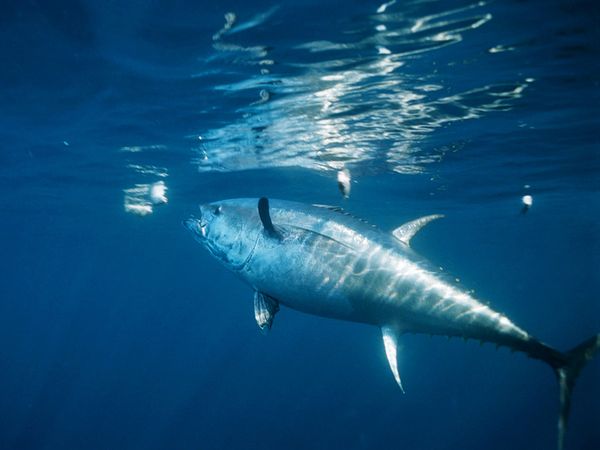
A record radioactive contamination from last year's Fukushima nuclear accident has been detected in Pacific Bluefin tuna caught off the coast of California
They examined the muscle tissues of 15 Bluefin tuna (Thunnus orientalis) taken from waters off San Diego in August 2011, just a few months after the accident at the Fukushima Daiichi nuclear plant.
These were animals whose parents would have spawned in Japanese waters and spent one to two years locally before heading to feeding grounds in the eastern Pacific.
All the fish examined in the study showed elevated levels of radioactive caesium – the isotopes 134 and 137.
Caesium-137 is present in seawater anyway as a result of the fallout from atomic weapons testing, but the short, two-year half-life of caesium-134 means the contamination can be tied directly to Fukushima. There is no other explanation for the isotope’s presence.
The measured concentrations were about 10 times the total caesium radioactivity seen in tuna specimens taken from before the accident.
As a control, the team also examined Yellowfin tuna, which are largely residential in the eastern Pacific.
These animals showed no difference in their pre- or post-Fukushima concentrations.
The research is likely to get attention because Bluefin tuna is an iconic species and a highly valuable fishery – thousands of tons are landed annually.
But consumers should have no health concerns about eating California-caught tuna from last year, the team says.
The levels of radioactivity are well within permitted limits, and below those from other radioisotopes that occur naturally in the environment, such as potassium-40.
“The potassium was about 30 times higher than the combined radio-caesium levels. If you calculate how much additional radioactivity there is in the Pacific Bluefin tuna caught in California relative to the natural background – it’s about 3%,” said Prof. Nicholas Fisher.
The scientists even calculated how much radioactivity might have been present in the fish before they swam across the Pacific (it would have fallen over time) and figured it could have been 50% above background levels; but, again, this would still have met the legal requirements for safe consumption.
Tuna caught in the coming months will be subjected to new tests. These animals would have spent much longer in Japanese waters and so conceivably could have a very different pollution load.
The team also believes the investigation should be extended to other migratory species that frequent Japanese waters.
Fukushima pollution is potentially a very useful tool to trace the origin and timing of animal movements. The ratio of caesium 134 to 137 could be used like a clock to work out when and how long a particular migration took.
“This information might be useful in conservation efforts or in managing fisheries,” said Prof. Nicholas Fisher.
US researchers from Stanford University have demonstrated a means to use short sections of DNA as rewritable data “bits” in living cells.
The technique uses two proteins adapted from viruses to “flip” the DNA bits.
Though it is at an early stage, the advance could help pave the way for computing and memory storage within biological systems.
The team reporting in Proceedings of the National Academy of Sciences says the tiny information storehouses may also be used to study cancer and aging.
The team, from Stanford University’s bioengineering department, has been trying for three years to fine-tune the biological recipe they use to change the bits’ value.

US researchers from Stanford University have demonstrated a means to use short sections of DNA as rewritable data "bits" in living cells
The bits comprise short sections of DNA that can, under the influence of two different proteins, be made to point in one of two directions within the chromosomes of the bacterium E. coli.
The data are then “read out” as the sections were designed to glow green or red when under illumination, depending on their orientation.
The two proteins, integrase and excisionase, were taken from a bacteriophage – a virus that infects bacteria. They are involved in the DNA modification process by which the DNA from a virus is incorporated into that of its host.
The trick was striking a balance between the two counteracting proteins in order to reliably switch the direction of the DNA section that acted as a bit.
After some 750 trials, the team struck on the right recipe of proteins, and now have their sights set on creating a full “byte” – eight bits – of DNA information that can be similarly manipulated.
The work is at the frontier of biological engineering, and senior author of the research Drew Endy said that applications of the approach are yet to come.
“I’m not even really concerned with the ways genetic data storage might be useful down the road, only in creating scalable and reliable biological bits as soon as possible,” Dr. Drew Endy said.
“Then we’ll put them in the hands of other scientists to show the world how they might be used.”
As the DNA sections maintained their logical value even as the bacteria doubled 90 times, one clear application would be in using the DNA bits as “reporter” bits on the proliferation of cells, for example in cancerous tissue.
But longer-term integrations of these computational components to achieve computing within biological systems are also on the researchers’ minds.
“One of the coolest places for computing is within biological systems,” Dr. Drew Endy said.
Researchers from Northwestern University, US, say bilingualism is a form of brain training – a mental “work out” that fine-tunes the mind.
Speaking two languages profoundly affects the brain and changes how the nervous system responds to sound, lab tests revealed.
Experts say the work in Proceedings of the National Academy of Sciences provides “biological” evidence of this.
For the study, the team monitored the brain responses of 48 healthy student volunteers – which included 23 who were bilingual – to different sounds.
They used scalp electrodes to trace the pattern of brainwaves.
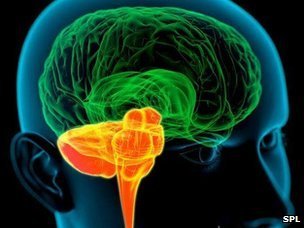
Speaking two languages profoundly affects the brain and changes how the nervous system responds to sound, lab tests revealed
Under quiet, laboratory conditions, both groups – the bilingual and the English-only-speaking students – responded similarly.
But against a backdrop of noisy chatter, the bilingual group were far superior at processing sounds.
They were better able to tune in to the important information – the speaker’s voice – and block out other distracting noises – the background chatter.
And these differences were visible in the brain. The bilingualists’ brainstem responses were heightened.
Prof. Nina Kraus, who led the research, said: “The bilingual’s enhanced experience with sound results in an auditory system that is highly efficient, flexible and focused in its automatic sound processing, especially in challenging or novel listening conditions.”
Co-author Viorica Marian said: “People do crossword puzzles and other activities to keep their minds sharp. But the advantages we’ve discovered in dual language speakers come automatically simply from knowing and using two languages.
“It seems that the benefits of bilingualism are particularly powerful and broad, and include attention, inhibition and encoding of sound.”
Musicians appear to gain a similar benefit when rehearsing, say the researchers.
Past research has also suggested that being bilingual might help ward off dementia.
Researchers have found that traces of ancient viruses which infected our ancestors millions of years ago are more widespread in us than previously thought.
A study shows how extensively viruses from as far back as the dinosaur era still thrive in our genetic material.
It sheds light on the origins of a big proportion of our genetic material, much of which is still not understood.
The scientists investigated the genomes of 38 mammals including humans, mice, rats, elephants and dolphins.
The research was carried out at Oxford University, the Aaron Diamond AIDS Research Centre in New York and the Rega Institute in Belgium.
It is reported in the journal Proceedings of the National Academy of Sciences.
One of the viruses was found to have invaded the genome of a common ancestor around 100 million years ago with its remnants discovered in almost every mammal in the study.
Another infected an early primate with the result that it was found in apes, humans and other primates as well.
The work established that many of these viruses lost the ability to transfer from one cell to another.
Instead they evolved to stay within their host cell where they have profilerated very effectively – spending their entire life cycle within the cell.
The researchers found evidence of the viruses multiplying so extensively within mammals’ genomes that they have been compared to an outbreak of disease.
The senior author of the study, Dr. Robert Belshaw from Oxford University’s Zoology Department, said: “This is the story of an epidemic within every animal’s genome, a story which has been going on for 100 million years and which continues today.
“We suspect that these viruses are forced to make a choice: either to keep their ‘viral’ essence and spread between animals and species. Or to commit to one genome and then spread massively within it.”
The study shows that the viruses involved have lost a gene called envwhich is responsible for transmission between cells.
Known as endogenous retroviruses, these micro-organisms have gone on to become 30 times more abundant in their host cells.
The study is one of many attempting to understand the full complexity of the human genome.
Astonishingly, only 1.5% of the genetic material in our cells codes for human life. Half of the rest is sometimes described as “junk DNA” with no known function, and the other half consist of genes introduced by viruses and other parasites.
According to the lead author, Dr. Gkikas Magiorkinis, “much of the dark matter in our genome plays by its own rules, in the same way as an epidemic of an infectious disease but operating over millions of years.
“Learning the rules of this ancient game will help us understand their role in health and disease.”
This raises the extraordinary scenario of our DNA serving as an environment in which viruses can evolve – a micro-ecology within the double-helix of our genetic material.
There is evidence that they can provide positive services. For example the protein syncytin – derived from a virus – helps develop the placenta.
Dr. Robert Belshaw says that endogenous retroviruses (ERVs) are not known to have any obvious or direct health effects.
“But there could be effects we’re not picking up on or things we could even take advantage of if we detect ERVs moving around or expressing proteins as a result of cancer or infection.”
The study was supported by the Wellcome Trust and the Royal Society in UK.
About 9,000 of possible new ancient sites have been discovered by archaeologists using computers to scour satellite images.
Jason Ur said he had found about the potential early human settlements in north-eastern Syria.
Computers scanned the images for soil discoloration and mounds caused when mud-brick settlements collapsed.
Dr. Jason Ur said surveying the same area on the ground would have taken him a lifetime.
Writing in the Proceedings of the National Academy of Sciences, the researcher said: “With these computer science techniques, however, we can immediately come up with an enormous map which is methodologically very interesting, but which also shows the staggering amount of human occupation over the last 7,000 or 8,000 years.
“What’s more, anyone who comes back to this area for any future survey would already know where to go.
“There’s no need to do this sort of initial reconnaissance to find sites. This allows you to do targeted work, so it maximizes the time we have on the ground.”
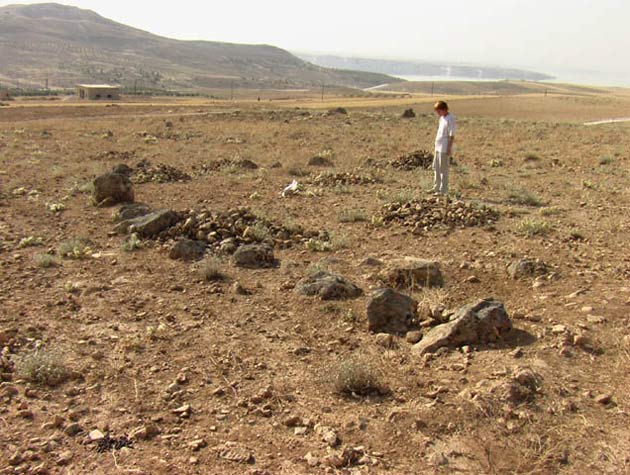
About 9,000 of possible new ancient sites have been discovered by archaeologists using computers to scour satellite images
In the past, Dr. Jason Ur used declassified spy satellite photographs and the human eye to try to identify potential sites.
But over the last three years, he has worked with computer expert Bjoern Menze, from the Massachusetts Institute of Technology, to create a software application able to classify a huge range of terrain.
Dr. Jason Ur said this had removed subjectivity and allowed them to look at a much larger area.
In all, about 9,000 possible settlements were identified across 23,000 sq km.
Ideally, Dr. Jason Ur said, some of these would be excavated, but the volatile political situation in Syria had forced them to put any ground searches on hold.
However, Dr. Jason Ur said that he hoped to conduct further research in the Kurdish provinces of northern Iraq, and follow that up with excavations that would be “a very rigorous testing of the model”.
Archaeological work in Iraq has not been popular in the past, but Dr. Jason Ur feels the time is right to identify heritage sites of importance and ensure they are not lost as the country presses on with widespread development of its towns and cities.
Russian scientists have grown plants from fruit stored away in permafrost by squirrels over 30,000 years ago.
The fruit was found in the banks of the Kolmya River in Siberia, a top site for people looking for mammoth bones.
The Institute of Cell Biophysics team raised plants of Silene stenophylla – of the campion family – from the fruit.
Writing in Proceedings of the National Academy of Sciences (PNAS), they note this is the oldest plant material by far to have been brought to life.
Prior to this, the record lay with date palm seeds stored for 2,000 years at Masada in Israel.
Professor David Gilichinsky, the leader of the research team, died a few days before his paper was published.
In the workpaper, Professor David Gilichinsky and his colleagues describe finding about 70 squirrel hibernation burrows in the river bank.
“All burrows were found at depths of 20-40m from the present day surface and located in layers containing bones of large mammals such as mammoth, woolly rhinoceros, bison, horse, deer, and other representatives of fauna from the age of mammoths, as well as plant remains,” they write.
“The presence of vertical ice wedges demonstrates that it has been continuously frozen and never thawed.
“Accordingly, the fossil burrows and their content have never been defrosted since burial and simultaneous freezing.”
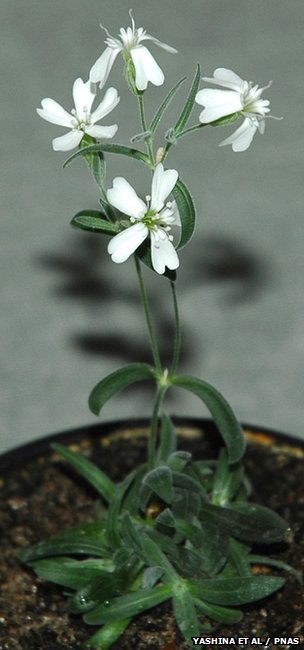
Russian scientists have grown plants from fruit stored away in permafrost by squirrels over 30,000 years ago
The squirrels appear to have stashed their store in the coldest part of their burrow, which subsequently froze permanently, presumably due to a cooling of the local climate.
Back in the lab, near Moscow, the team’s attempts to germinate mature seeds failed.
Eventually they found success using elements of the fruit itself, which they refer to as “placental tissue” and propagated in laboratory dishes.
The Russian team’s theory is that the tissue cells are full of sucrose that would have formed food for the growing plants.
Sugars are preservatives; they are even being researched as a way of keeping vaccines fresh in the hot climates of Africa without the need for refrigeration.
So it may be that the sugar-rich cells were able to survive in a potentially viable state for so long.
Silene stenophylla still grows on the Siberian tundra; and when the researchers compared modern-day plants against their resurrected cousins, they found subtle differences in the shape of petals and the sex of flowers, for reasons that are not evident.
The scientists suggest in their PNAS paper that research of this kind can help in studies of evolution, and shed light on environmental conditions in past millennia.
But perhaps the most enticing suggestion is that it might be possible, using the same techniques, to raise plants that are now extinct – provided that Arctic ground squirrels or some other creatures secreted away the fruit and seeds.
A huge Burmese python was caught by rangers in Everglades, Florida, before it could lay eggs containing the 59 super-predators inside her.
The image was taken in 2009 but the problem is a very pressing one in 2012. Nothing and no one is safe when these marauding foreign invaders emerge from the fetid swamp that has become their home.
Super- pythons like this one- are causing mayhem in the Everglades where they are decimating native species, numbers of raccoons, opossums, bobcats and other mammals.
With no natural predators scientists fear the pythons are disrupting the food chain and upset the Everglades’ delicate environmental balance in ways difficult to predict.
Many of them were originally pets that were turned loose by their owners when they got too big to manage.
Others are believed to be descendents of domestic pythons that escaped from pet shops during Hurricane Andrew in 1992.
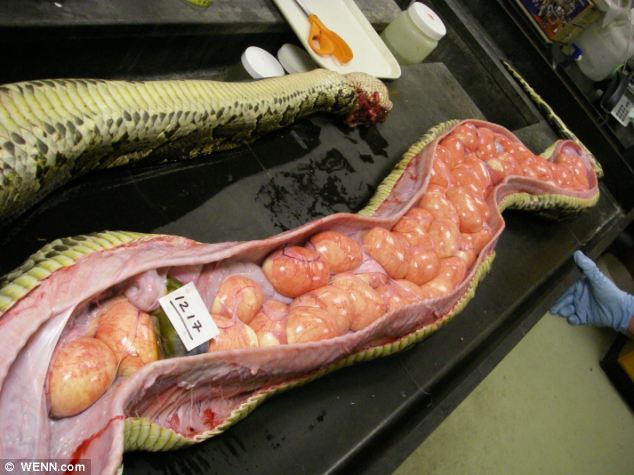
A huge Burmese python was caught by rangers in Everglades, Florida, before it could lay eggs containing the 59 super-predators inside her
A recent study, published last month in the Proceedings of the National Academy of Sciences, found that sightings of medium-size mammals are down dramatically – as much as 99%, in some cases – in areas where pythons and other large, non-native constrictor snakes live wild.
Tens of thousands of Burmese pythons, which are native to Southeast Asia, are thought to inhabit the Everglades, where they thrive in the warm, humid climate.
The National Park Service says 1,825 Burmese pythons have been caught in and around Everglades National Park since 2000.
Among the largest captured was a 156-pound, 16.4-foot one caught last month.
In 2010, Florida banned private ownership of Burmese pythons. Earlier this month, U.S. Interior Secretary Ken Salazar announced a federal ban on the import of Burmese pythons and three other snakes.
BURMESE PYTHON
Burmese pythons can grow to be 26 feet long and more than 200 pounds.
Pythons are not venomous. Instead, they kill their prey by locking it in their jaws, which boast powerful, backward-facing teeth, then crushing it in their coils. They then swallow it whole.
Their success is due to their ability to gorge on huge meals – and then go without food for months.
After a big kill, the snake’s insides remodel themselves to cope with such a feast. Their heart grows in size to produce more blood for digestion, extra stomach acid is produced and the intestines rearrange themselves.
Researchers studying mice at the Stanford University School of Medicine in California have converted skin cells directly into cells which develop into the main components of the brain.
The experiment, which was reported in Proceedings of the National Academy of Sciences, skipped the middle “stem cell” stage in the process.
The researchers said they were “thrilled” at the potential medical uses.
Far more tests are needed before the technique could be used on human skin.
Stem cells, which can become any other specialist type of cell from brain to bone, are thought to have huge promise in a range of treatments. Many trials are taking place, such as in stroke patients or specific forms of blindness.
One of the big questions for the field is where to get the cells from. There are ethical concerns around embryonic stem cells and patients would need to take immunosuppressant drugs as any stem cell tissue would not match their own.
An alternative method has been to take skin cells and reprogram them into “induced” stem cells. These could be made from a patient’s own cells and then turned into the cell type required, however, the process results in cancer-causing genes being activated.
The research group is looking at another option – converting a person’s own skin cells into specialist cells, without creating “induced” stem cells. It has already transformed skin cells directly into neurons.
This study created “neural precursor” cells, which can develop into three types of brain cell: neurons, astrocytes and oligodendrocytes.
These precursor cells have the advantage that, once created, they can be grown in a laboratory into very large numbers. This could be critical if the cells were to be used in any therapy.
Brain cells and skin cells contain the same genetic information, however, the genetic code is interpreted differently in each. This is controlled by “transcription factors”.
The researchers used a virus to infect skin cells with three transcription factors known to be at high levels in neural precursor cells.
After three weeks about one in 10 of the cells became neural precursor cells.
Lead researcher Prof. Marius Wernig said: “We are thrilled about the prospects for potential medical use of these cells.
“We’ve shown the cells can integrate into a mouse brain and produce a missing protein important for the conduction of electrical signal by the neurons.
“More work needs to be done to generate similar cells from human skin cells and assess their safety and efficacy.”
Dr. Deepak Srivastava, who has researched converting cells into heart muscle, said the study: “Opens the door to consider new ways to regenerate damaged neurons using cells surrounding the area of injury.”
According to experts, relationships may be as vital to good health as a balanced diet and plenty of rest.
Scientists at UCLA’s school of medicine have found that negative social interactions can lead to increased inflammation, which may in turn cause a host of illnesses from cancer to heart disease and high blood pressure.
The study findings have been published this week in the Proceedings of the National Academy of Sciences journal.
The UCLA (University of California, Los Angeles) study gives solid grounding to the anecdotal evidence that being upbeat and positive – and surrounding one’s self with people with that do not represent competitive or toxic relationships – may be one way to avoid getting sick.
Taking a group of 122 healthy young people, the California-based scientists monitored stressful events and compared them to the body’s production of two inflammation-causing proteins.

Scientists at UCLA's school of medicine have found that negative social interactions can lead to increased inflammation, which may in turn cause a host of illnesses from cancer to heart disease and high blood pressure
Relying on the age-old method of capturing emotions – the diary – scientists recorded the group’s competitive and frictional moments and compared them with the chemicals found in swabs from the inner cheek.
The researchers found that those who had a negative few days preceding the swab had a higher proportion of the proteins responsible for conditions including high blood pressure, risk of heart disease, cancer and depression, according to Science News.
A similar peak in the pro-inflammatory proteins also occurred after participants were subjected to a stress-inducing numbers quiz and then asked to give a public speech.
The results – which may bring a whole new light to many a bad relationship – are thought to be grounded in evolutionary survival mechanisms.
While the modern link between stress and illness is well-documented, psychologist Nicholas Rohleder from Brandeis University in Waltham, Massachusetts, told Science News that inflammation fends off infections that may once have been the result of fight or flight encounters.
“Without the dangers humans once faced when it came to getting through each and every day, stress may lead to unchecked chronic inflammation,” Nicholas Rohleder said.














